The minute you land in Iceland, you are transported to a world of geological curiosity and wonderful lunar landscapes. The space odyssey starts right from the drive connecting Keflavík Airport to Reykjavík, along rugged lava fields and conic mountains like Keilir. The feeling of otherworldliness is everywhere , as Iceland simply abounds with extra-terrestrial sights.
In many regions, geothermal heat is tangible, making Iceland look like a window to the core of the Earth. Everywhere, the otherworldly feel is enhanced by the silence, sparseness and remoteness. You can easily drive hours without seeing another human and enjoy many sites just for yourself.
If it wasn’t for the large asphalt road that circumnavigates the whole island, one could really feel being on a Moon mission.
Some of the country’s man-made installations even add to that surrealism, like the satellite dish complexes in the middle of nowhere, or these distinctive geothermal domes dotted across the country and used to protect the power stations wellheads.
Iceland as a Sci-fi Destination
From the many glacier tongues stretching from Vatnajökull Glacier, to Krafla Volcano and Mývatn Area, if you’re a blockbuster aficionado, you have seen a fair bit of Iceland over the recent years. Iceland has become the number one destination to sci-fi movie directors everytime they are in need of improbable dramatic backdrops or the most alien landscapes. The planets featured in Interstellar, the opening scene at Dettifoss in Prometheus, Star Wars, Batman Begins, Star Trek: Into Darkness, Oblivion, and of course the TV Series Game of Thrones. There is now quite a list developing.
But there is much more to Iceland than just the scenery itself. Iceland’s very unique and diverse topography draws geologists and other experts to Iceland, and even astronauts in pursuit of the closest thing to the moon.
NASA Apollo Astronauts and Iceland
American Apollo astronauts visited Iceland on two training missions, called GFTs (for Geology Field Trips), in 1965 and in 1967 when Neil Armstrong visited. With one ambition: bringing the first man to the moon.
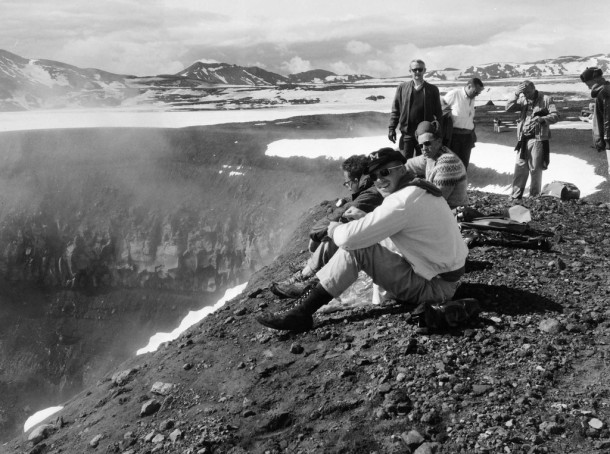
Exploration Museum - Apollo Astronauts GFTs in Iceland
A common belief is that they trained here because of the similarities of the landscape with the moon’s surface. Vast, barren landscapes. In the Icelandic terrain they found “Beautiful volcanic geology with practically no vegetation cover. Features includes calderas, ash cones, steaming volcanic vents, cinders, pumice, various types of lava flows. Probably the most moon-like of the field areas.” (NASA, GFTs July 12-16, 1965 Iceland).
But the astronauts did not just go there for the view. By bringing astronauts to Iceland, the Space agency NASA aimed at instructing them in selecting the most representative samples of Moon rocks to bring back. Thanks to Iceland’s diverse geology, the two teams of astronauts could familiarize themselves with geological structures and learn communication techniques to best describe them. A geology lesson, it was!
Back then, assumptions were made based on images sent by space probes. The lunar surface was expected to be covered mostly with basaltic rocks, specifically palagonite tuff. Being one of the world’s youngest islands, Iceland is one of few places still covered with vast and untouched areas of palagonite tuff.
The astronauts concentrated around the site of the Askja Caldera, but also trained near Krýsuvík on Reykjanes Peninsula.
The rest is history! Amongst the 12 men that have set foot on the moon, nine trained in Iceland, including Buzz Aldrin and Neil Armstrong.
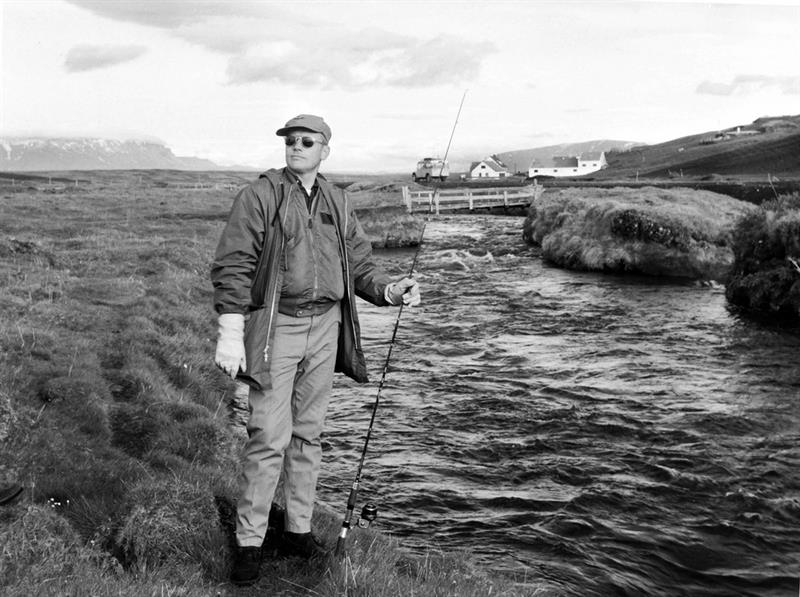
While in Iceland, the astronauts did like every other tourist, including horseback riding, fishing… - Exploration Museum - Apollo Astronauts GFTs in Iceland
Moonscapes of Iceland
1. Skútustaðagígar Pseudocraters - North

Photo Source: Visit North Iceland
Located on the South shore of Lake Mývatn, Skútustaðir is the first point of interest as you enter the area. These beautiful pseudo craters were formed when boiling lava flowed over the wetlands and pushed the ground down, trapping water below it. The water heated so much it turned into steam, causing high pressure. This resulted in gas explosions forming the groups of small craters we can observe today. Such craters can be found in Skútustaðir and... on the moon.
Do not miss the circuit among the pseudocraters, the longer one takes 1 hour and takes you around a small lake, while the smaller loop is only 20 minutes.
2. Hverir Geothermal Area - North

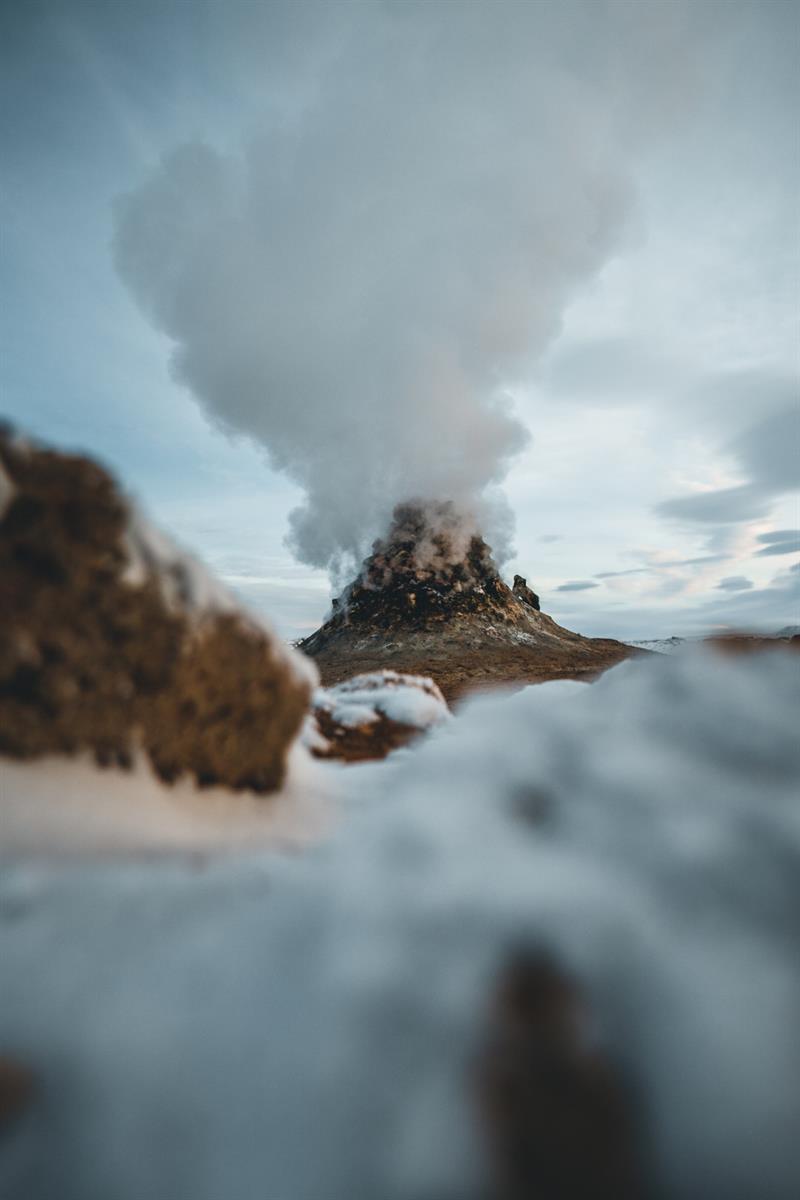
On the East side of Lake Mývatn this time, at the foothills of Mount Námafjall lies Hverir brewing Geothermal Area, famous for the rich geology. It is primal there. From smoking fumaroles and bubbling mud pools to hissing steam vents, the entire scene looks surreal. What is very real though is the power of the Earth felt there. And the smell of rotten eggs.
3. Hverfjall Crater - North
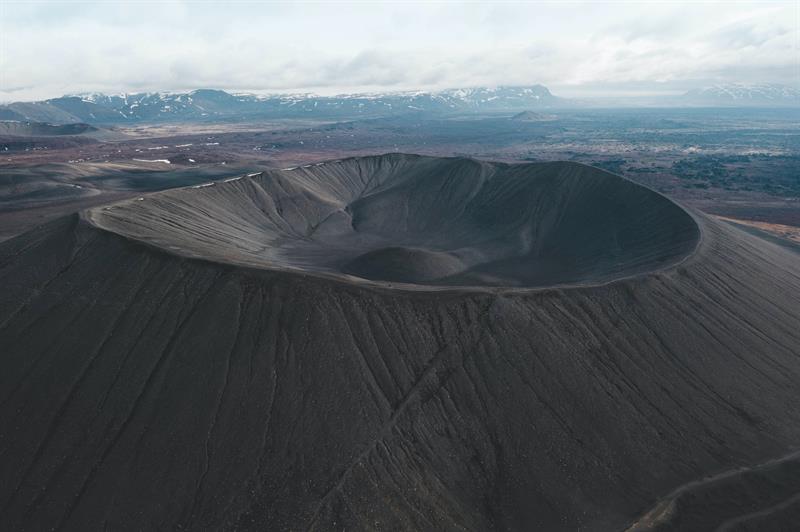
Hverfjall, or Hverfell, is a tuff ring volcano to the East of Mývatn, in the Southern part of the Krafla fissure. The Krafla volcanic area, approximately 10 kilometres wide and 90 kilometres long, is one of the most active of the country, with at least twenty eruptions since settlement. Hverfjall erupted some 2800-2900 years ago and what makes it distinctive is its large, satisfyingly symmetrical crater, of 1 km in diameter.
That makes it one of the largest of its kind in the world. It is possible to conquer Hverfjall following the path up to the rim (20 minutes), and even walk around the rim.
4. Víti Crater - North

Also part of the Krafla volcanic system, Víti Crater was formed by the massive eruption known as the Mývatn Fires, that lasted five years (1724-1729). The eruption was such that jets of lava could be seen shooting in the sky from the South Coast! Krafla is around 300 meters in diameter and is famous for its vivid blue.
5. Leirhnjúkur Lava Field - North
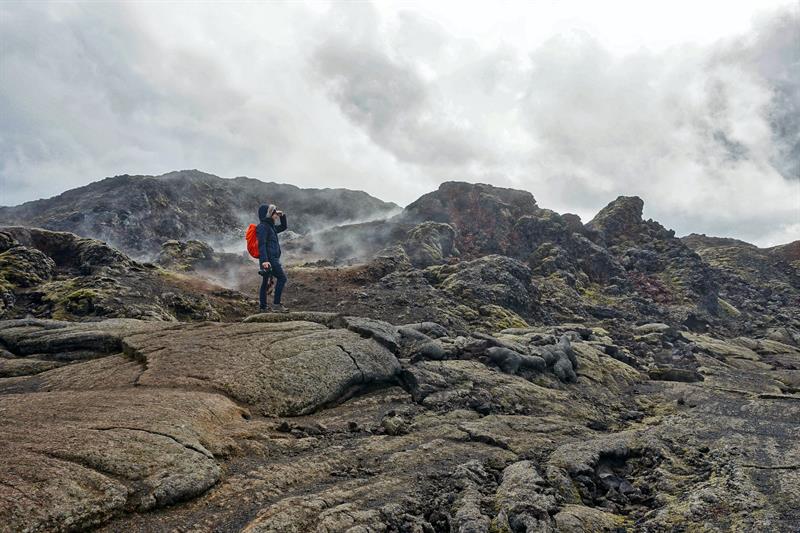
Another place where you can feel the power of the Earth and wonder whether you landed on another planet. Leirhnjúkur is part of the Krafla Caldera and the Krafla Lava fields. What makes the experience of this geothermal area extraordinary is the fact that the lava field is still steaming, 35 years after the last volcanic event, Krafla Fires (1975-1984).
6. Askja Caldera - Highlands
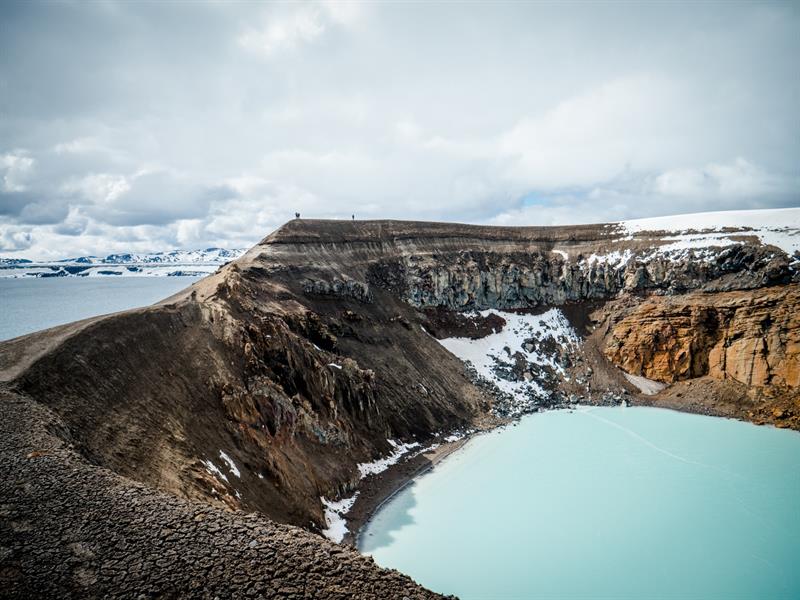
Askja is an enormous caldera and volcano surrounded by Dyngjufjöll mountains, North of Vatnajökull glacier. The caldera, was unknown until a tremendous eruption started on March 29, 1875. The area was used extensively during training for the Apollo mission. Apollo 14 astronaut Edgar Mitchell recalled “It was a misty, surreal place, unlike anything I’d ever seen on my travels”.
Please note the region is only accessible for a few months of the year.
7. Kerlingarfjöll Mountain Range – Highlands
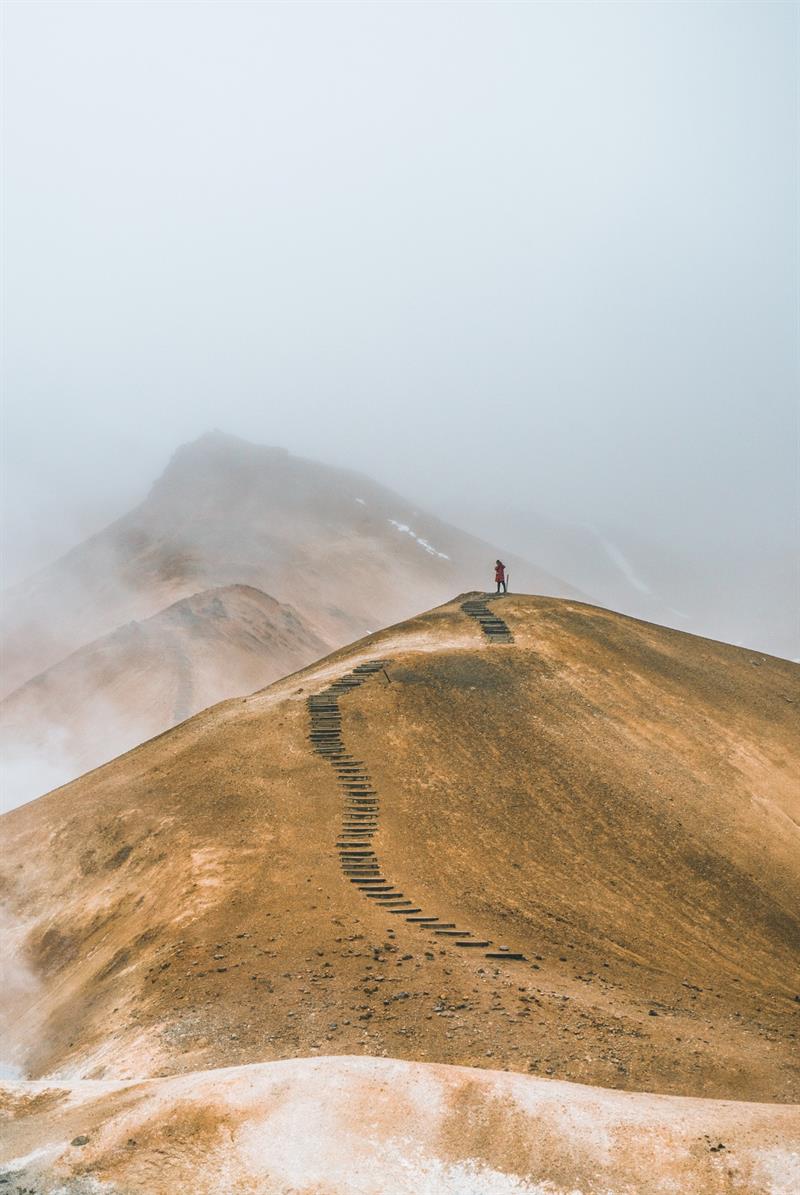
Kerlingarfjöll is a mountain range wedged between Glaciers Langjökull and Hofsjökull, located deep in Iceland’s central highlands. Tucked away within these snowy peaks is Hveradalir, a geothermal area that makes you step into a hiking paradise, far from the everyday life, far from everything. Kerlingarfjöll is located on the F347 road, therefore only accessible by 4x4 and highly dependent on weather conditions.
8. Seltún Geothermal Field in Krýsuvík – Reykjanes

Only 40 km from Reykjavík, Krýsuvík Geothermal Area is a popular destination. Its main geothermal field, Seltún, is a joyful blend of superheated colours from bright yellow, red and green hues. It features all kind of geothermal features including solfataras, hot springs, boiling mud pools, and steam vents. Good wooden walking pathways take you safely around this high temperature area.
Other points of interest in the area include the intense green-blue Lake Grænavatn, Kleifarvatn, and Krýsuvíkurbjarg Bird Cliff.
9. Gunnuhver Geothermal Area – Reykjanes
Gunnuhver can be found in the Reykjanes UNESCO Global Geopark, not far from the Bridge Between The Continenents. It is a highly active geothermal area of mud pools and steam vents. A 20-meter wide cauldron constantly spewing dense cloudy steam in the sky. It contrasts with other hot springs in that it is only seawater, due to its proximity to the ocean.
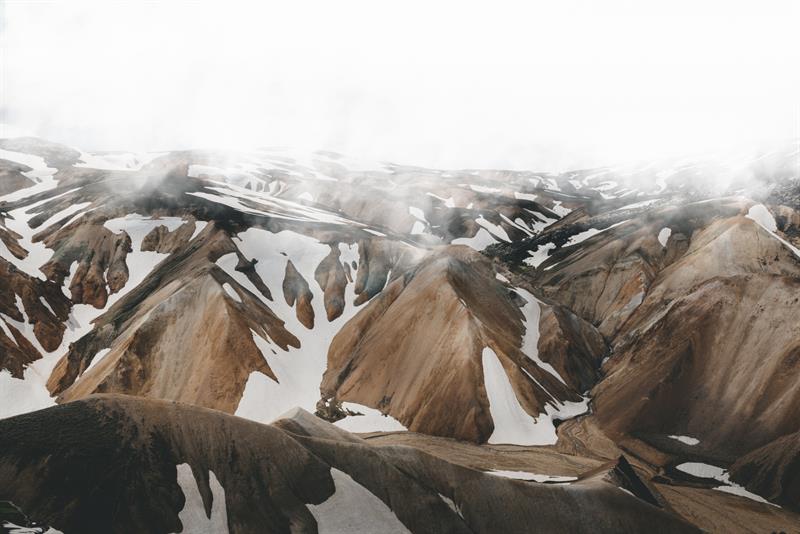
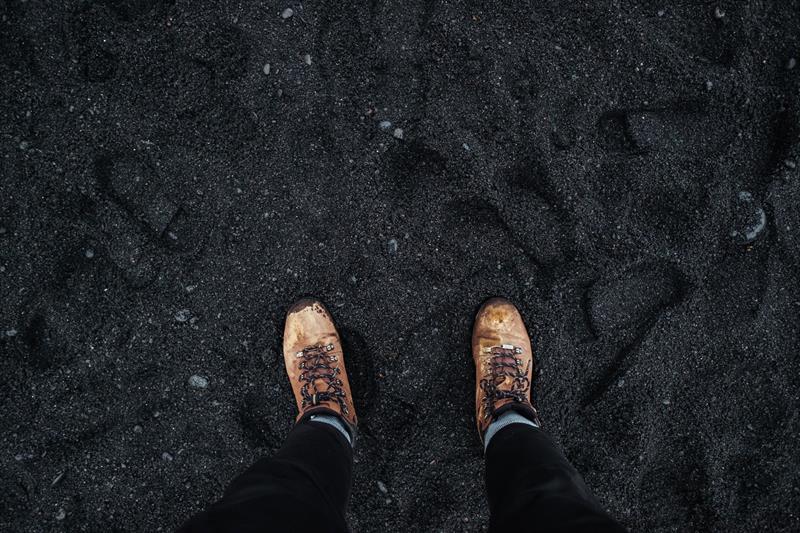
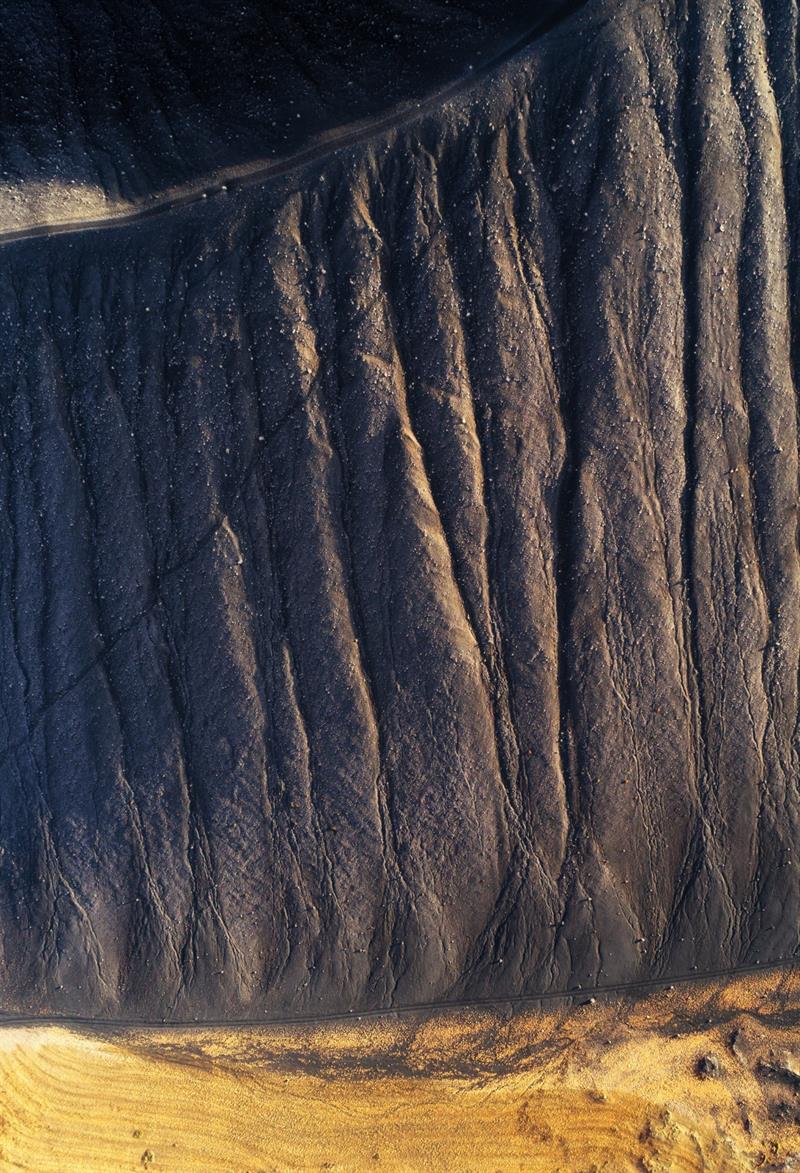
We hope you enjoyed this virtual tour. There are more other lunar, martian landscapes in Iceland that we can even count, including the interior route of Sprengisandur, the whole Laugavegur Trek, and all black sand beaches.
For now, we cannot resist to share you the Instagram account of @geology_with_helga, who was part of our Top Iceland Instagrammers to follow. Helga is an Icelandic geologist and PhD student, and when she is not on field work or processing some data, she is testing out some spacesuit for Mars mission. The combo Icelandic scenery + Mars spacesuit works just well!